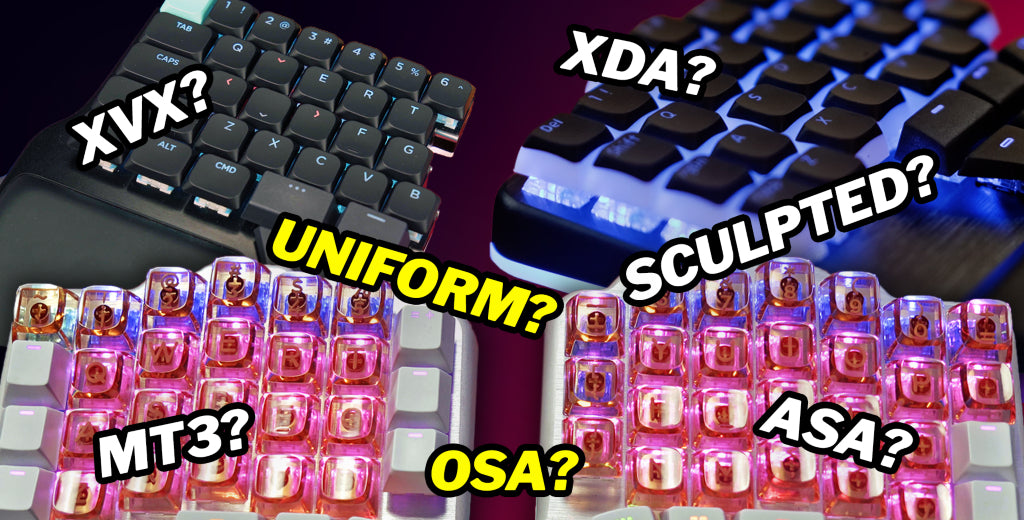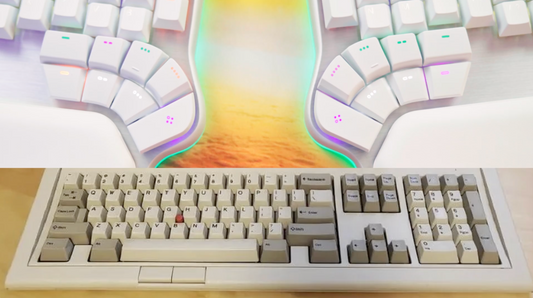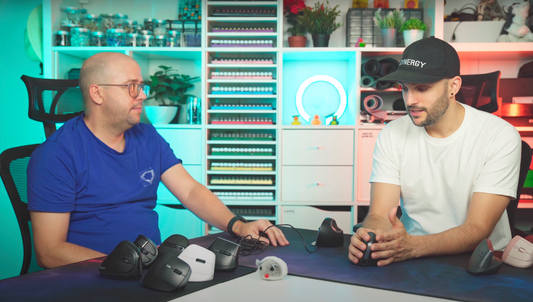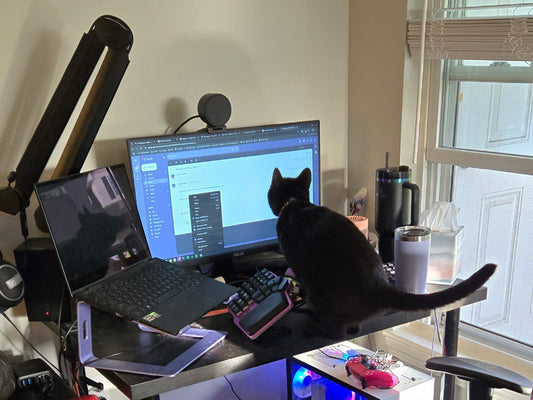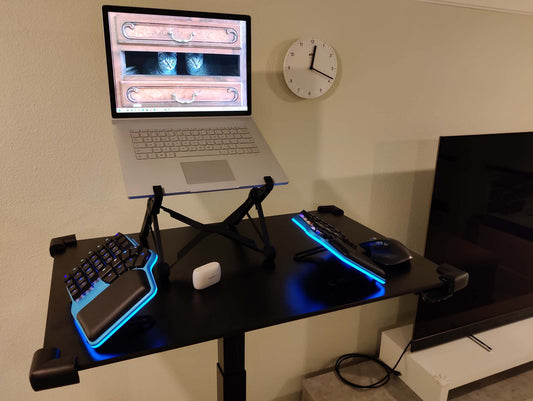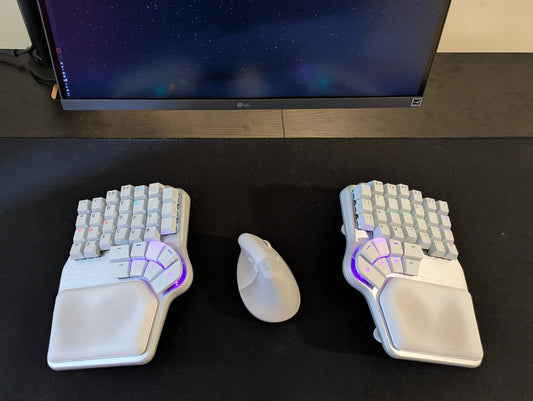Are you thinking of getting a new keycap set for your keyboard?
With so many options, finding the right fit can be tough. But don't worry, because here we are to help you in today's video - it will guide you to the perfect profile for you and your keyboard.
What is a keycap profile?
It's a combination of the shape of the contact surface, the shape of each row, and the height of a keycap.
There are four types of contact surfaces.
1. Starting with spherical, where the top of the keycap has a sphere-shaped indent.
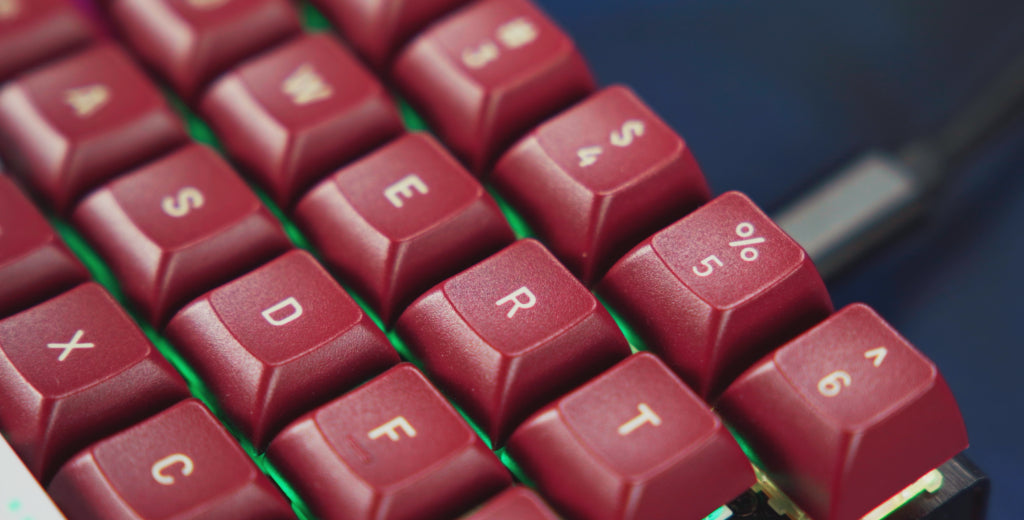
If you had a marble, you could basically place one on top of the keycap. This design goes way back to 1961 with the IBM typewriter.
A modern example of the spherical contact surface is the MDA or SDA profile.
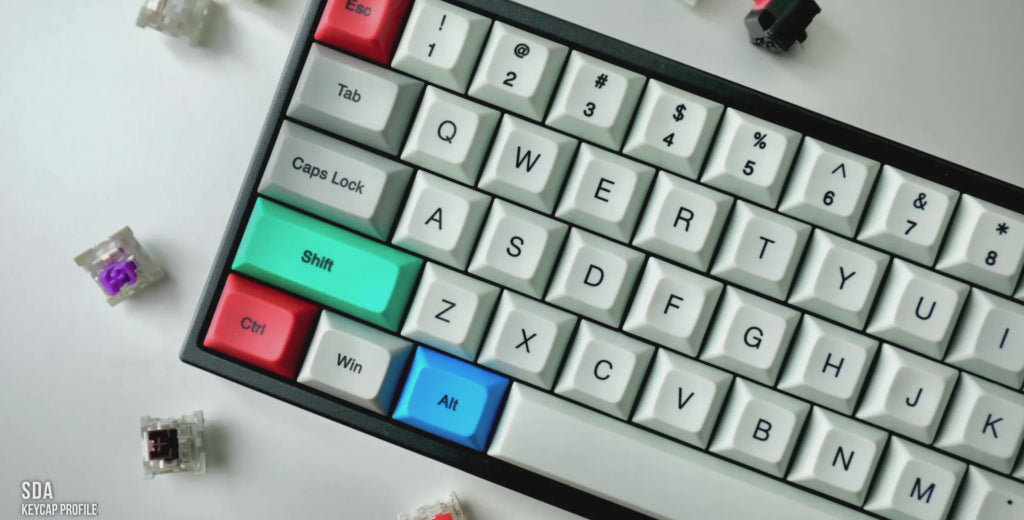
Some people like this shape because you feel that dip in the middle of the keycap. It's as if it really hugs your fingertip.
2. Then, we have cylindrical, where the top of the keycap has a cylinder-shape indent.
Cherry and OEM profiles have this shape.
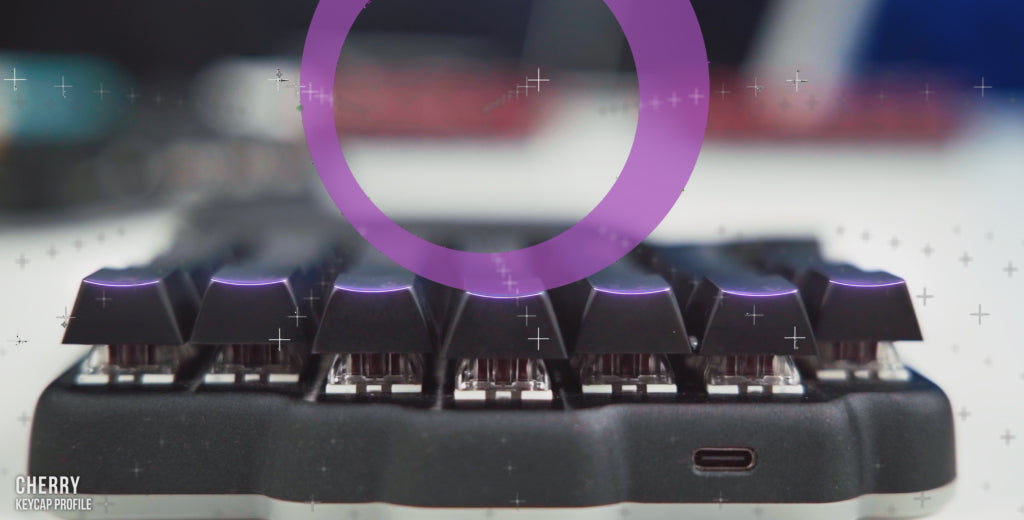
And how does this affect the typing experience?
This shape helps guide the finger in a columnar disposition, where the fingers generally just move up and down. If you have a columnar-staggered keyboard, you may be more inclined to get a cylindrical top.
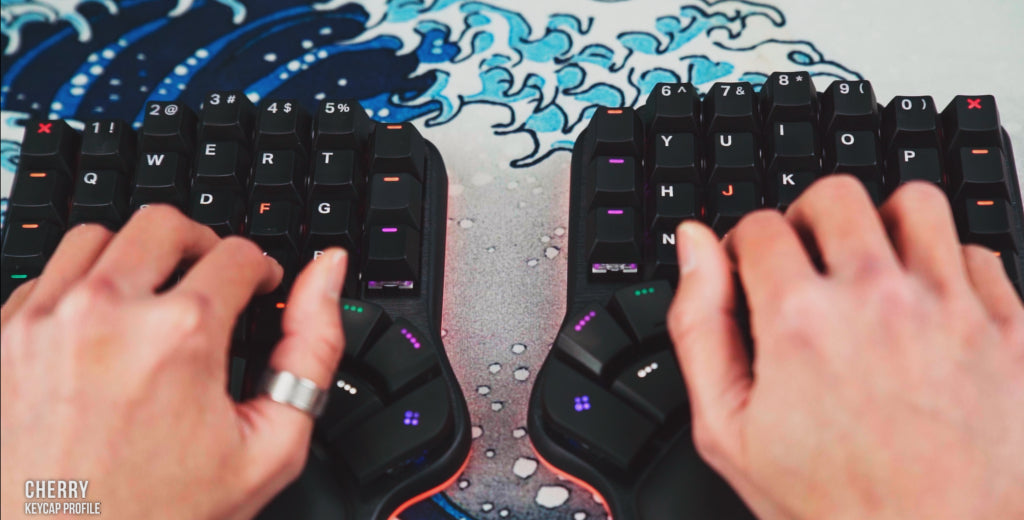
Moving your fingers from left to right makes you feel the edges because they're a little sharper. This allows the user to know where the limits of the key are, and it helps prevent pressing two keys at the same time.
3. Then, there are the flat keycaps, like the G20 profile, and most laptop keycaps.
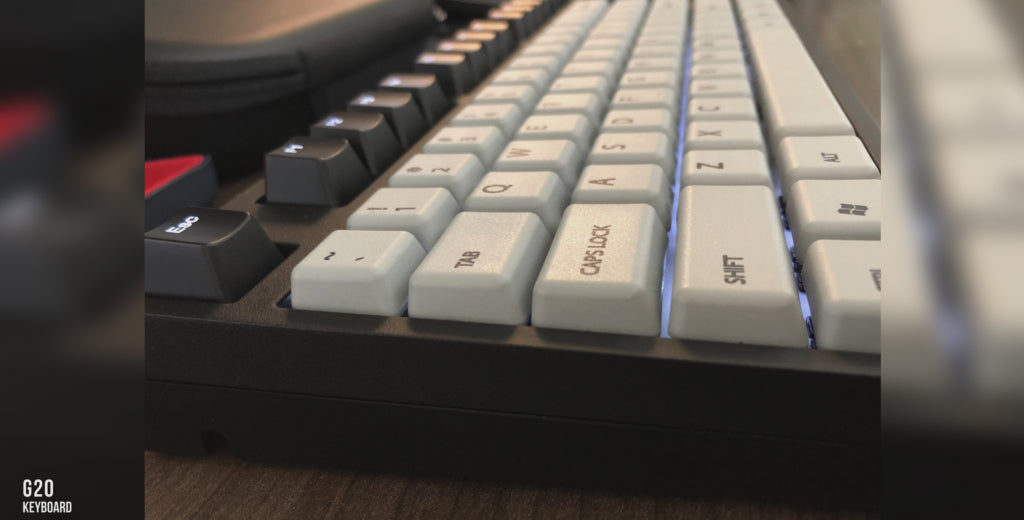
This shape offers more contact surface; when you use it, it also feels like you require less finger movement when typing. Just compare typing on a regular keyboard vs. typing on your laptop keys.
4. And last are the convex keycaps, which have a more rounded shape at the top and are generally only used for the space bar or thumbkeys because of how our thumbs press down on a key.
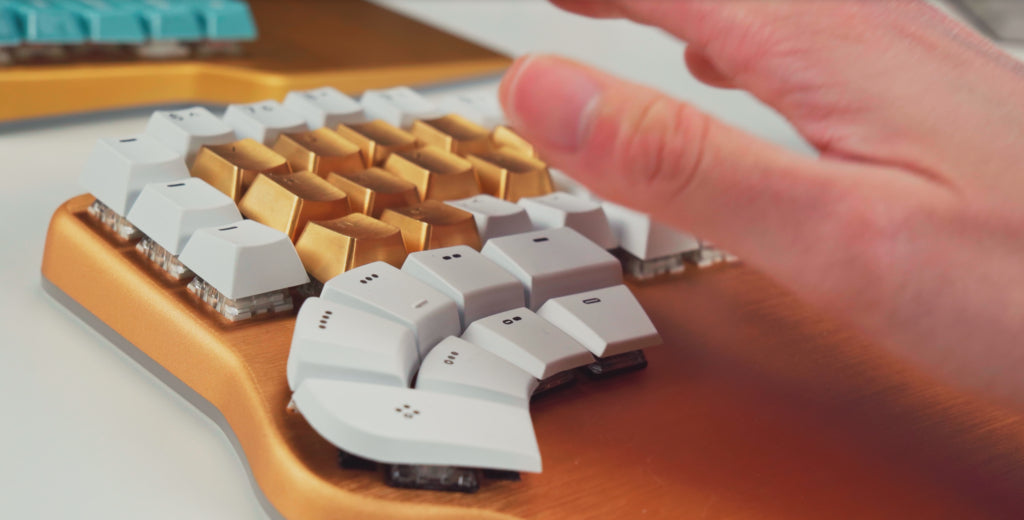
Now we know the contact surfaces, let's study the row shape.
Pick up your keyboard and look at it from the side; you'll see it's either sculpted or uniform.
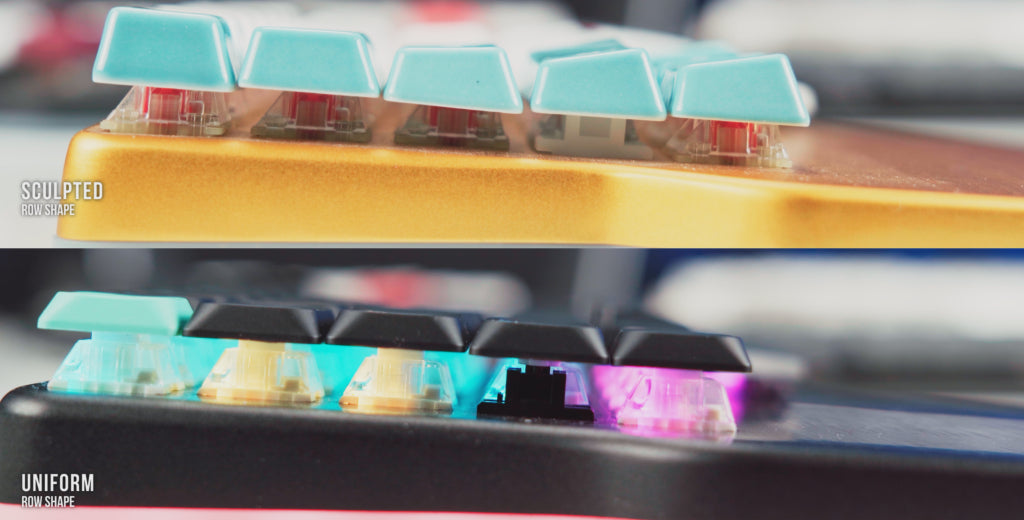
Sculpted keycaps have each row of keys with different heights and shapes. This is to help differentiate each row of keys.
Sculpted keycaps are, for example, DSS profile, Cherry, and OEM.
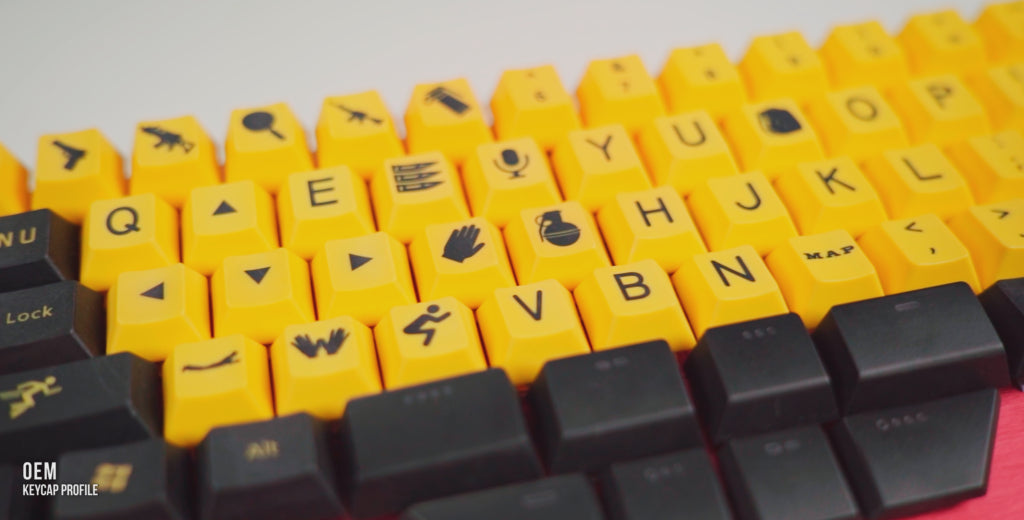
The first row of keys is usually higher than the 3rd or 4th row, thus making them more comfortable to use.

The only downside of sculpted keycaps is that you can't shuffle them around your keyboard because they'll have different heights.
And then, contrary to sculpted, some keycaps have the same shape and height for all rows. They are called uniform, and the XDA profile or MA are like this.
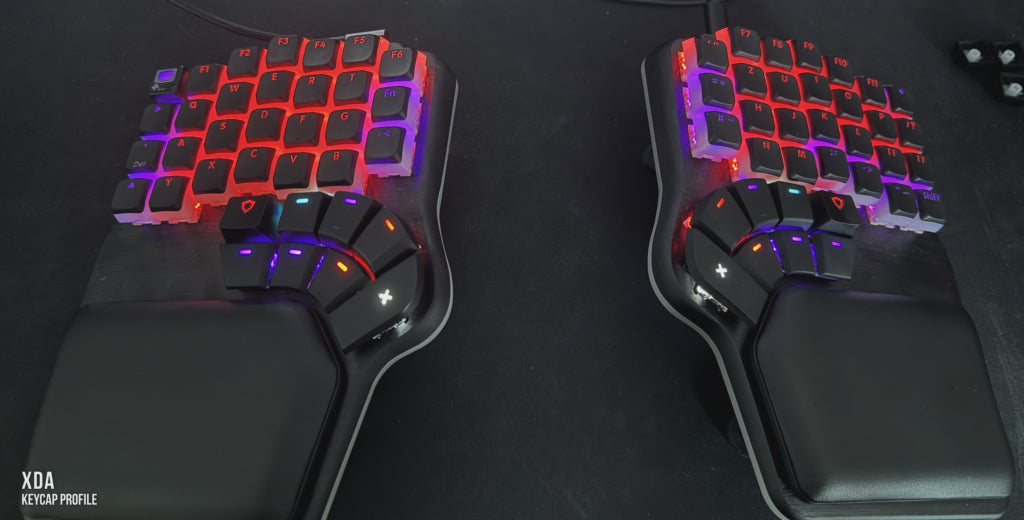
And finally, we have the keycap heights - low, medium, and high.
OEM is the standard height and is considered a medium-height keycap. So, for everything that's 2mm taller than OEM, we can consider it as high.

Like the SA profile, it's both sculpted and spherical.
Or the MT3 profile, which is sculpted and cylindrical.
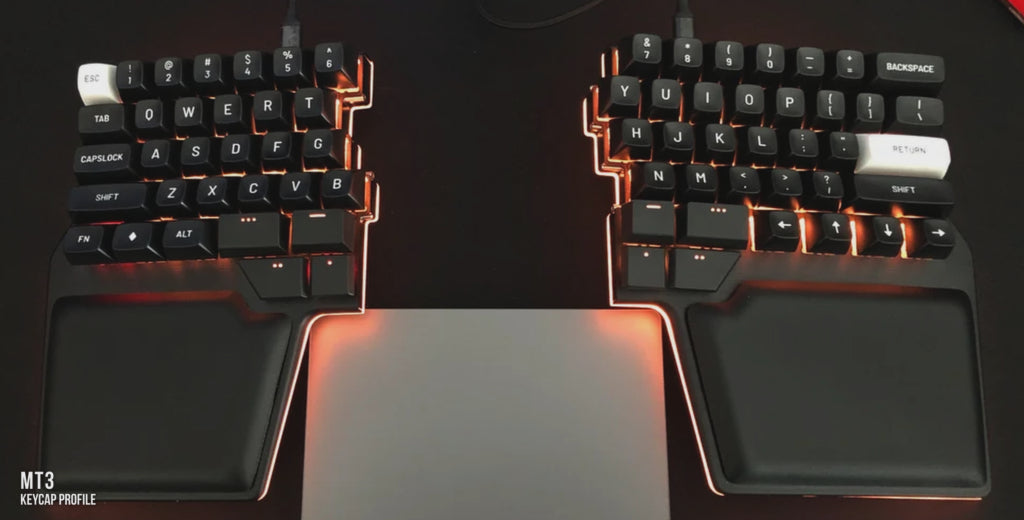
We can consider low height for all keycaps that are lower than 9mm.
For example, the DSA profile, G20, and XVX are low profile.
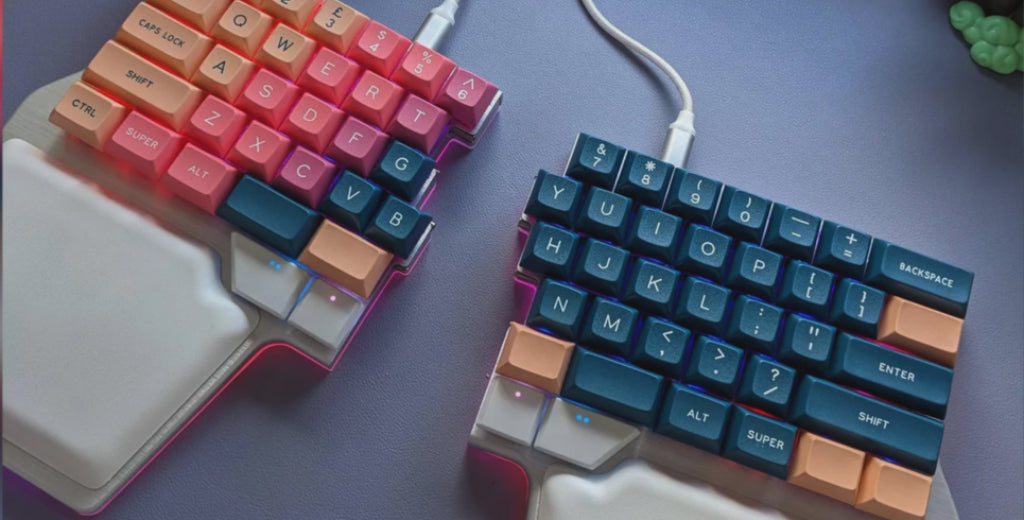
Important factors when buying a new keycap set
Now that we've got the technical jargon out of the way let's talk about some of the important factors to consider when buying a new keycap set.
Do you have a tall keyboard?
If you do, then high-profile keycaps are probably not the best idea, as they may lead to wrist extension. Unless you have palm rests or palm pads that allow you to place your wrists in line with the keys.
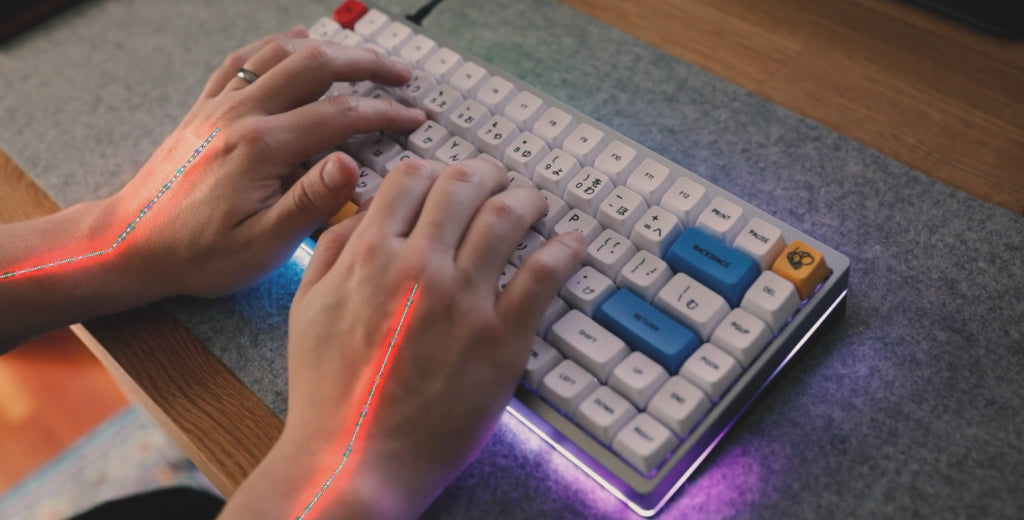
Does your keyboard have a custom thumbcluster?
Normally, these keycaps can't be replaced easily. If your keyboard has a thumb cluster, you'd need to see if the keycap set you're interested in will fit and look good on your keyboard.
For example, for the Dygma Defy thumb cluster, the keys are made with the Cherry profile in mind. So consider that medium height for the rest of the keycaps.
You can notice the height difference between metal OEM keycaps and Cherry keycaps on the Defy.
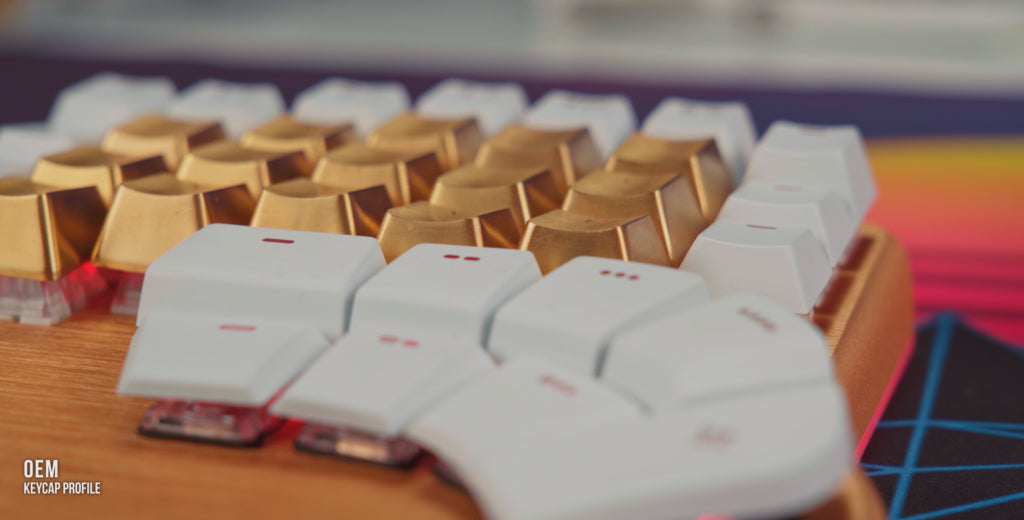
How many 1-unit keycaps does my keyboard have?
Normally, ortholinear or column-staggered keyboards only use 1 unit of keycaps, except for the thumbkeys. One unit is the distance from one key to the next.
If we take a look at a 100% keyboard, they have the following 1-unit keycaps:
- 40 on row 1
- 18 on row 2
- 14 on row 3
- 18 on row 4
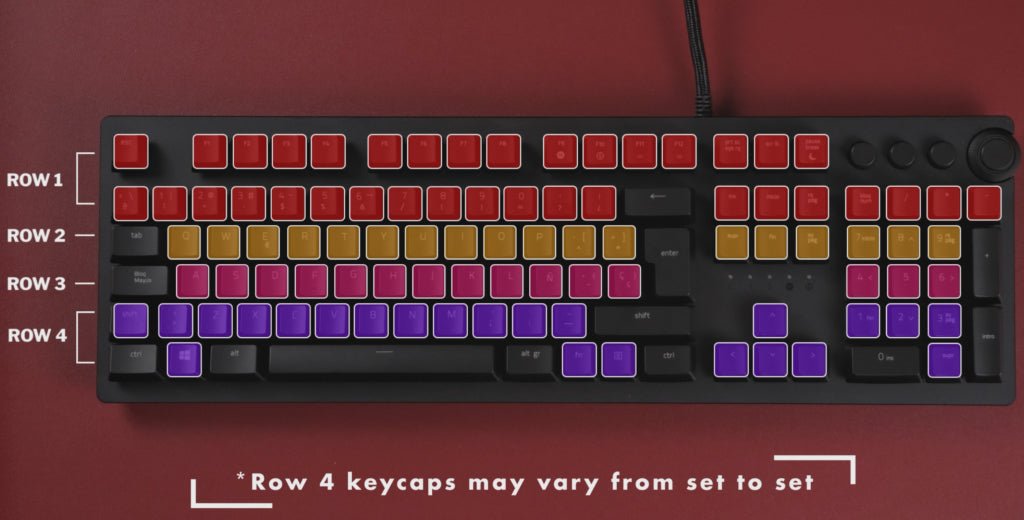
On the Dygma Defy, there are:
- 14 on row 1
- 14 on row 2
- 14 on row 3
- 12 on row 4
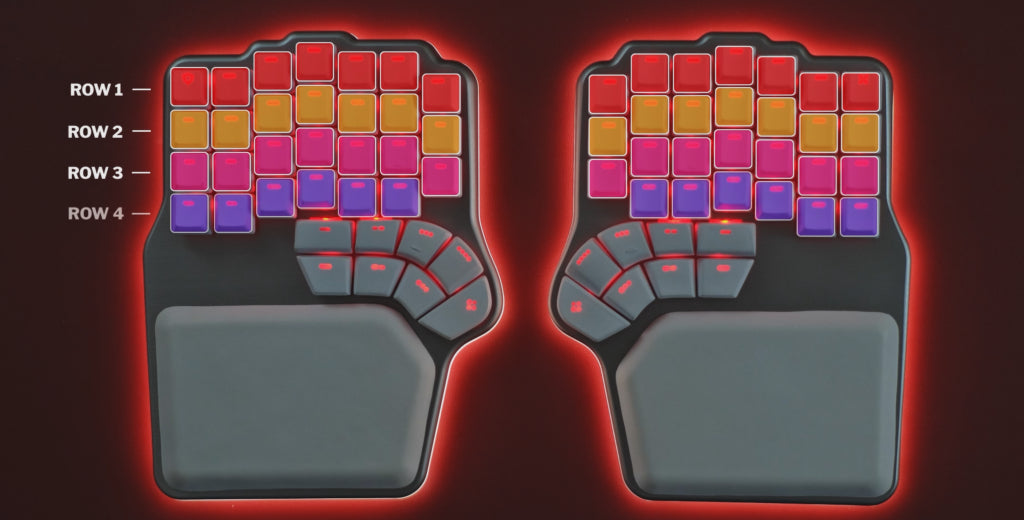
The Moonlander has the same number of 1-unit keycaps on rows 1, 2 and 3 but then has 22 on row 4.
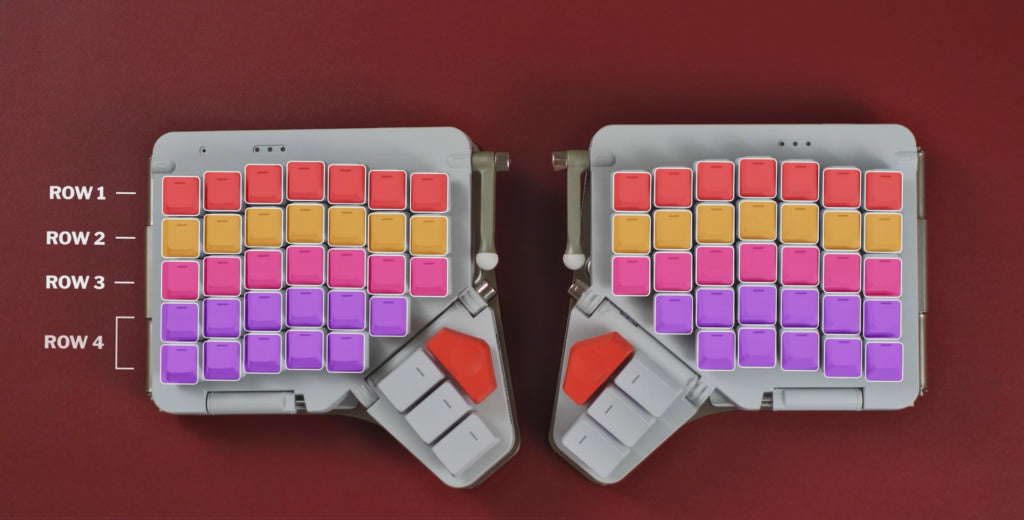
It's not only the number of keycaps you should be thinking about but also whether they're sculpted or not.
Since each row is sculpted differently, this will give you some limitations.
But with a uniform profile like the XDA, you can put any key anywhere.
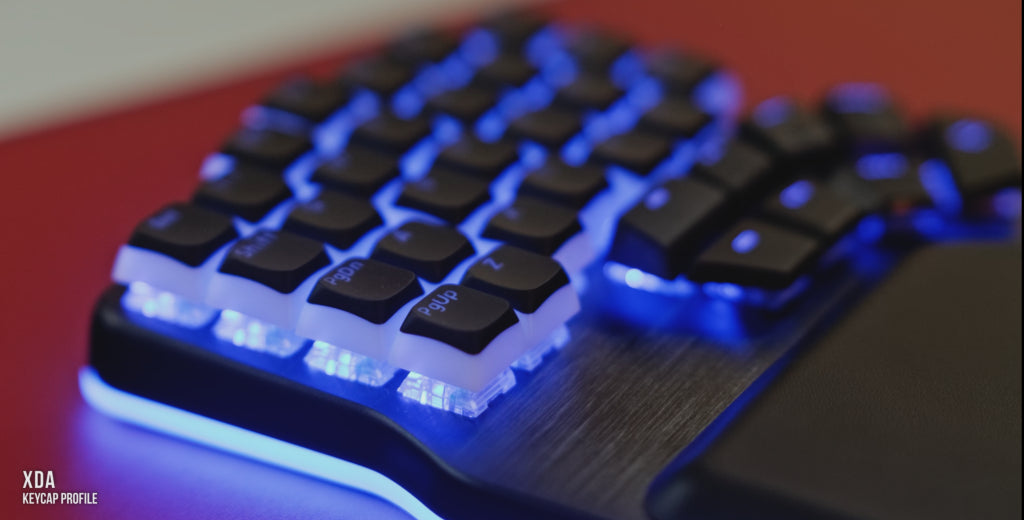
What is the size of your hand?
For smaller hands - you might want to avoid high-profile keycaps since they might be a bit more difficult to reach and might require extra effort.
For larger hands, you might prefer keys with a bigger contact surface to prevent double inputs, so maybe the spherical or flat models fit you better.
So now that you have these things in mind, let's ask the most important question.
What do you want to accomplish with your new keycap set?
If it's for aesthetics, then the keycap profile is secondary. You can focus more on the colors and how it matches your setup.
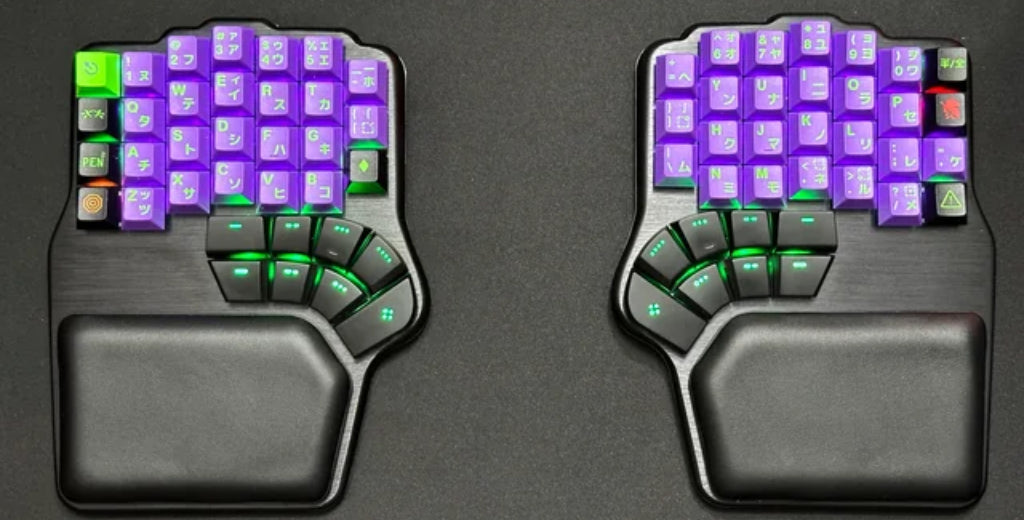
Check if it allows shine through or not, as well as the materials and how it's made.
You can learn more about this topic in our video:
Is it for practicality?
Let's say, for example, you want to start testing another keyboard layout, such as Colemak, instead of QWERTY.
You'd want the ability to move the keycaps freely around the keyboard to have that visual representation.
If this is the case, it would be best to use uninform profile keycaps. Other examples would be the ADA profile or even the TAI HAO BOBO profile. It's uniform but slightly spherical.
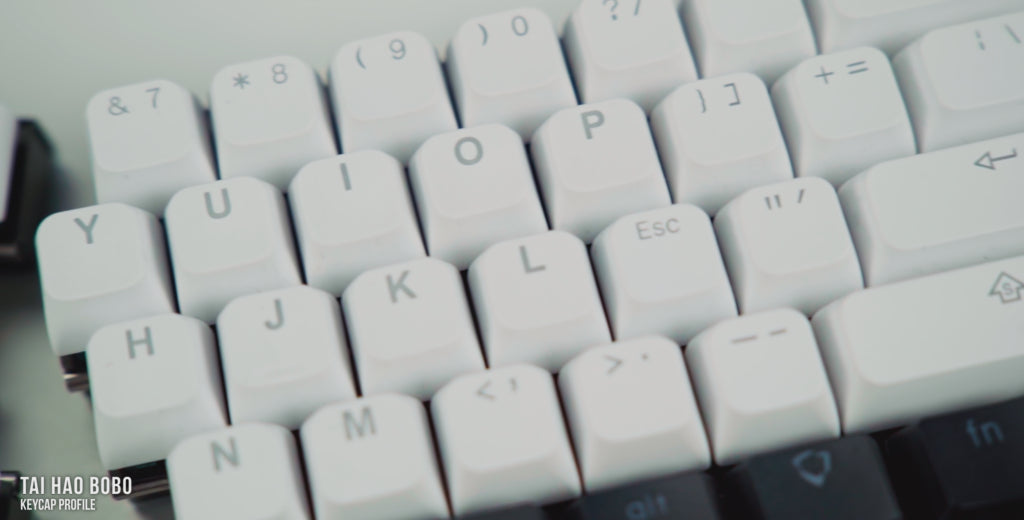
Or maybe you're getting a new set for special circumstances; you're vision impaired, and you need keycaps with big characters or legends and a larger contact surface.
Then, the best profile you should go for is a flat one with large letters, like the G20, or this OEM profile.
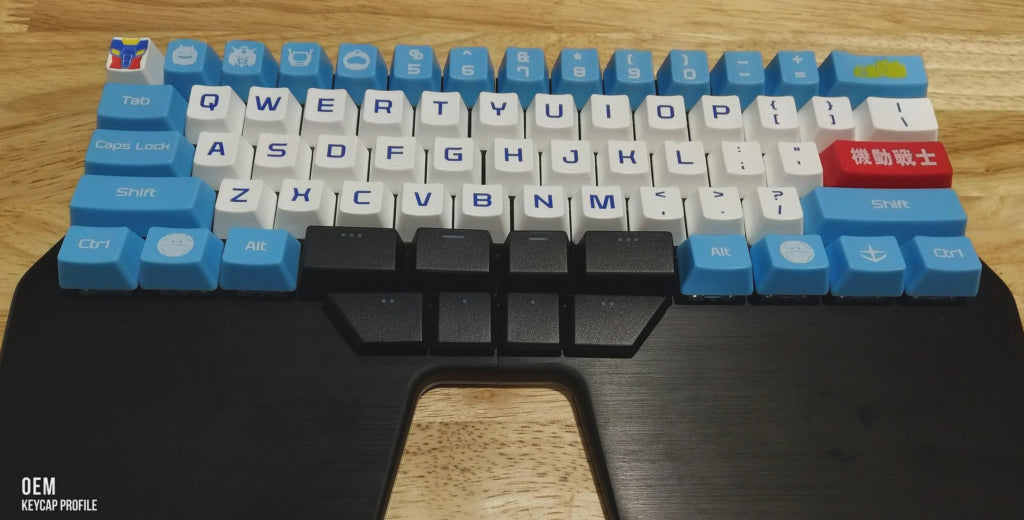
What is the right choice for you?
We can't go through every possible scenario, but with this information, you'll be equipped with the right tools to figure that out yourself.
Let's say you have larger hands, you have a columnar keyboard, and you're a fan of spherical keycaps because you like how the keycaps hug your fingertip every time you type on them.
When it comes to row shapes, you prefer sculpted.
Then, the MDA profile might be a good choice.
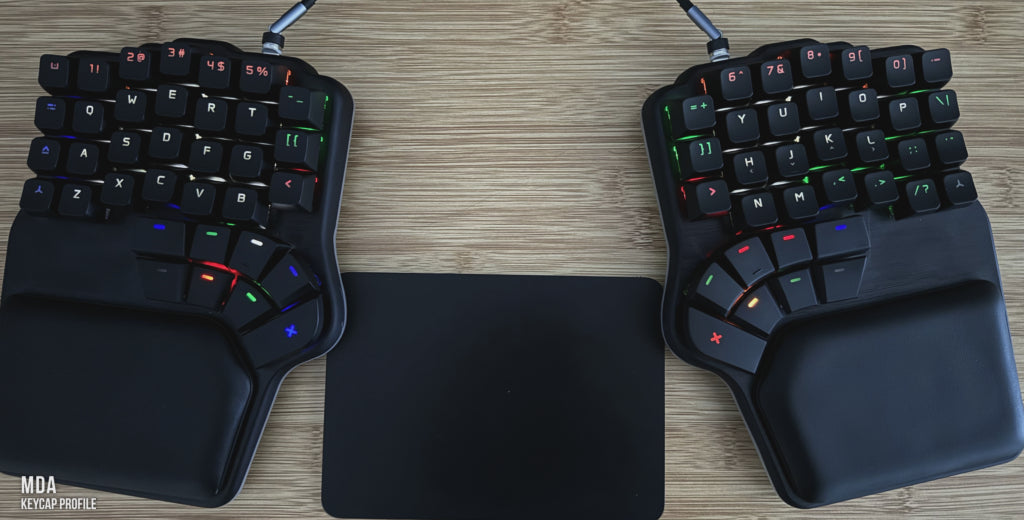
MDA keycaps are typically made from PBT plastic and high-quality PBT, ensuring a long-lasting keycap with a great feel.
The only downside to them is that they're still quite new in the market, so it might be difficult to find the ones you like.
If spherical is not your thing, you can get something like the ASA profile.
They are more cylindrical and they're slightly taller than the MDA but otherwise pretty similar.
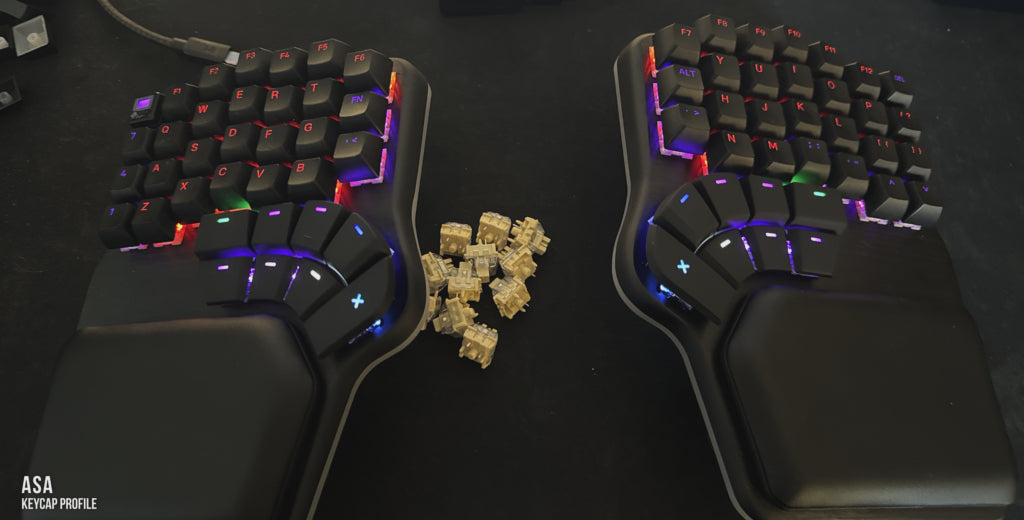
Conversely, if you have smaller hands, prefer a bit of uniformity or a minimalist style, and like that flat feel with only a touch of spherical shape, then the XVX low-profile keycaps could be your best bet.
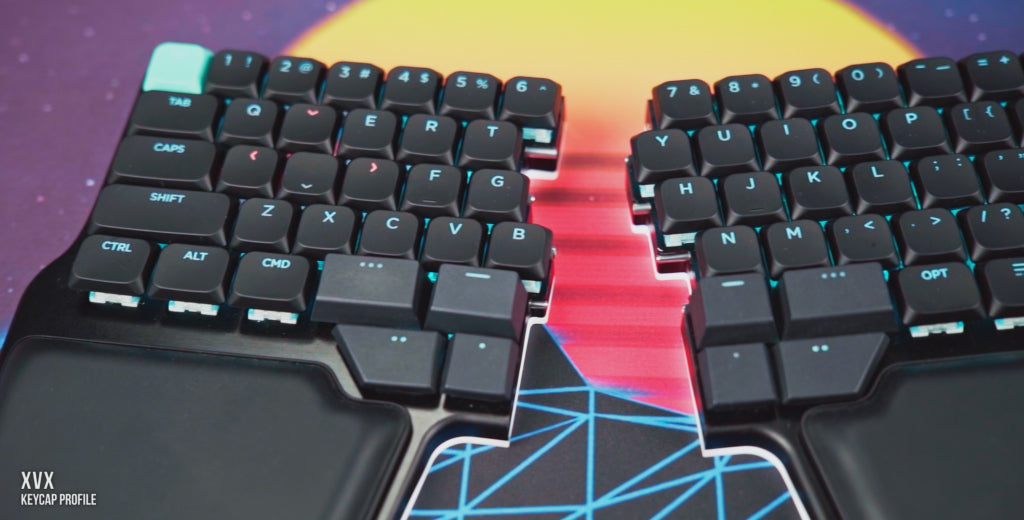
These sculpted keycaps can fit in the standard MX Switches and are perfect for those who want to enjoy the lower profile but want to enjoy regular switches' press feel and distance.
The only issue is that these sets are not built for columnar models, and you might encounter the problem of the 1-unit keycaps.
If you have medium-sized hands and like that spherical touch with a heavily sculpted row shape, then the DSS could be your go-to.
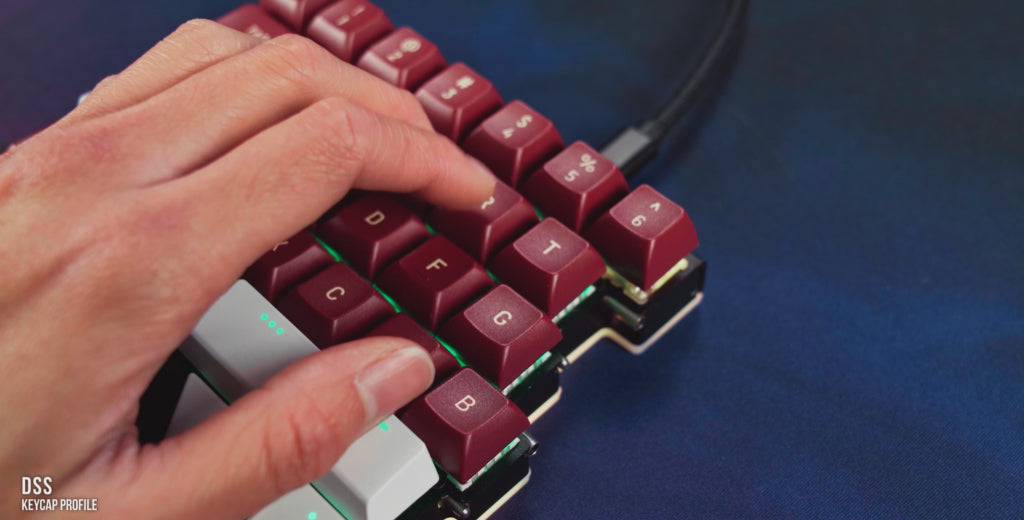
The unique angling on the first rows makes them loved by those who use the DSS keycaps, though they can be pricier and sometimes hard to find.
Like with most things in life, finding the right keycaps requires asking yourself the right questions.
We hope we've shed some light on refining those questions so you can get the answers you need.
If you're thinking of making a keycap switch, or already have some extra setup, we'd love to hear about it on our Discord and Reddit.
